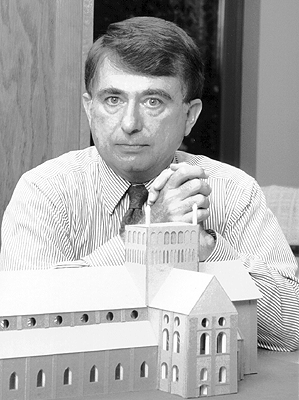Honesty and deception
What is the role of honesty and deception in architecture today?


Before I answer the question above, let’s talk about the difference between honesty and deception. Honesty, honest of the material, means that used the real surface of the material without cover on it. Deception, which the structure is covered up and have a smooth surface.

John Ruskin As if, whatever is pretended, it is wrong
Three heads architectural deceits to be considered. First, the suggestion of a mode of structure or support, other than the true one. Second, the painting of the surfaces to represent some others material not just only a cover. Third, the use of cast or machine-made ornaments of any kind. He thinks that brick, marble, stone is honesty material and metal, steel is mechanical material, something not real.

Viollet-le-Duc Original is impossible apart from truth
Viollet brought the idea that the steel can be honesty as long as it having the function as support instead of decoration. He encouraged using structural iron because it allowed to make the largest space with lighter and stronger construction. The third precept id that we should follow a certain order in our thoughts, beginning with those objects which are simplest and most easy to understand and ascending as by gentle degrees to the knowledge of the most composite. The material used must indicated their function by the form we give them; stone must appear as stone, iron as iron, wood as wood; and these substances, while assuming forms suitable to their nature, must be in mutual harmony.

Fil Hearn Truth to the medium, using materials
He accepted for using new material to perform various structural tasks, to bring out the age of the building. Materials that are hard, smooth and shiny are preferred to anything that is otherwise, which means a bias toward metal, glass, plastic. High tech material denoted the cutting edge of modernity. They achieve, celebrate, the aims of the early modernists.
Three of them agree with the truth of material.


Nowadays, architecture can be honesty and deception. But most of them are deception. The building, such as residential, hotels, commercial and others, the structure covered by plastering layer, even tiles and ornament. Can’t see the beauty of the original raw material. But some of the buildings are honesty, the architect try to change the heritage building with the theory of honesty and give them a new life, adaptive building as well.
Ng Sek San, landscape architecture and planning, who did well with the theory of honesty. He designed several honesty architecture, which named Sekeping. Most of them taking by the heritage building or shop house, transformed into honesty building. Respect to the old structure form and add in new structure, the structure mostly being its own material by no covering. He changed the activities of the building to give new life for it, such as original shop house into restaurant or guest house.

I like the theory of honesty more than deception. Because it respect to the material itself. Let the material be what they want to be.



